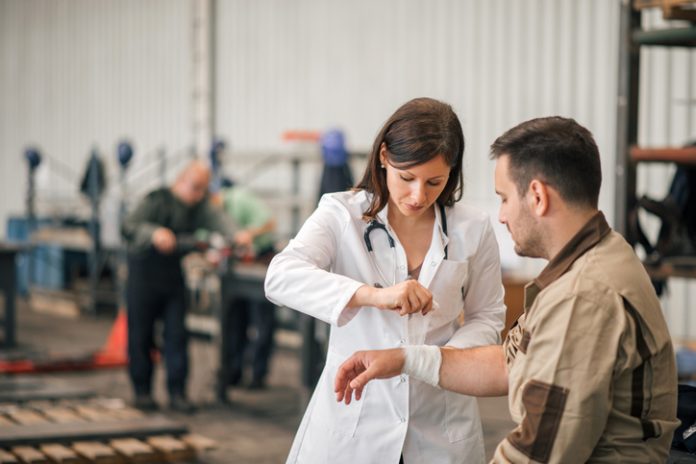A recent analysis of workplace safety in the United Kingdom revealed alarming statistics, emphasising the urgent need for improved safety measures across all industries. According to the Labour Force Survey (LFS), 561,000 UK workers sustained non-fatal injuries at work in 2022/23, with 124,000 of these incidents resulting in absences exceeding seven days.
Many of these injuries have an impact far beyond the immediate harm to employees. A significant 70% of small to medium-sized business owners report that absenteeism directly affects their profitability. In the 2021/22 period, the estimated annual cost of workplace injuries reached an astounding £20.7 billion – a £1.9 billion increase from the previous year.
The most common non-fatal workplace injuries
The Health and Safety Executive has identified the most common non-fatal workplace injuries:
- Slips, trips, or falls on the same level (32%)
- Handling, lifting, or carrying (17%)
- Being struck by a moving object (11%)
- Falls from height, primarily from ladders (8%)
- Acts of violence (8%)
As we expect, high-risk industries show higher injury rates. Of 100,000 workers, 3,730 were injured in agriculture, forestry, and fishing, followed by construction, with 2,640 reported injuries. However, experts stress that the risk of injury remains present across all sectors.
Safety specialists argue that simple yet effective measures could prevent many of these injuries. Among these is the proper use of safety signage. A leading safety equipment provider states, “A simple wet floor sign could be the difference between an employee slipping on a freshly mopped floor or avoiding an accident altogether.”
Other recommended preventive measures include:
- Anti-slip matting and stair treads
- Effective zone classification in hazardous areas
- Good housekeeping practices, including spill-cleaning kits
- Comprehensive employee training programs
Experts emphasise the importance of clear and well-maintained safety signs. The best locations are at eye level or 78 inches high to ensure visibility from a distance. In poorly lit areas, photoluminescent signs are recommended.
Safety signs for the most common injuries
In any workplace, safety signage is critical in preventing accidents and ensuring a safe environment. For instance, ‘slips, trips, and falls’ signs are essential hazard indicators. They are typically yellow in colour and strategically placed near sudden drops, trip hazards, or wet floors.
These signs are great for alerting employees to potential dangers in high-risk areas, such as staircases, slippery corridors, or areas where the floor surface may be uneven or wet, reducing the likelihood of accidents and injuries occurring.
Similarly, proper handling, lifting, or carrying techniques are crucial to workplace safety. This is where ‘lift correctly’ signs. These signs, blue in colour, are usually positioned on walls, doors, or other suitable surfaces in lifting zones or employee break rooms. They serve as constant reminders to employees about the correct procedures for lifting heavy objects, helping prevent back injuries and other musculoskeletal disorders.
In addition, signs indicating there might be ‘moving objects’ are often yellow and are placed at eye level near entrances to hazardous areas or moving machinery, warning employees of the potential dangers.
Finally, in areas with a risk of falls from heights, yellow triangular ‘danger’ signs should be located close to sudden drops or unstable structures, such as the entrances to building sites, alerting workers to be cautious and adhering to safety protocols.
Accidents can happen, but they can be prevented
As workplace accidents are more prone to happen when tasks become repetitive or employees are distracted, safety professionals stress the need for ongoing vigilance and regular refresher training.
The message from industry experts is clear: while accidents can happen, many work-related injuries are preventable. By implementing comprehensive safety measures and fostering a culture of safety awareness, businesses can protect their employees, reduce costs associated with workplace injuries, and create a more productive work environment.


































































